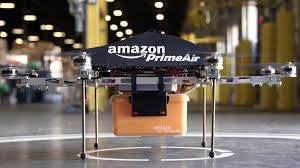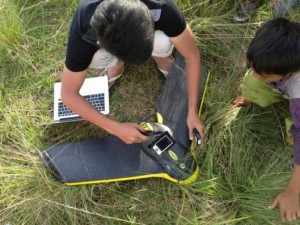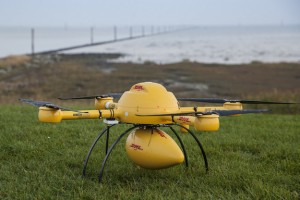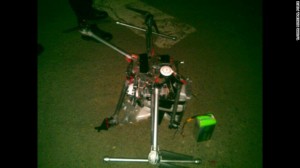Drone technology has been around for more than a few years now, but the United States is far behind other countries in passing any laws and regulations for their use. The rules the FAA has recently proposed, would limit the use of UAVs (unmanned aerial vehicles) to photography and film crews, while effectively putting a ban on drone package delivery. Below are some interesting examples of UAVs, where they are used (note it’s not the U.S.) and what they are used for-legally or illegally.
In 2011, Google Inc. began working on developing different types of drones designed to deliver various goods . Google said it expected it would “take years to develop a service with multiple vehicles flying multiple deliveries per day.” In 2014 Google’s “Project Wing” began testing their drones for delivery of their products, but were very limited as to where and how they could test because commercial use of drones was banned in the U.S. at this time. They took them to the open spaces of farm areas in Australia because the FAA was taking it’s time in changing the regulations because “the technology is potentially dangerous and raises privacy and concerns”.
L. Gordon Crovitz, writer for the Wall Street Journal, tells us about the frustrations of Amazon’s CEO, Jefferey Bezos, with the FAA on drone deliveries. Mr. Bezos introduced the Amazon Prime Air drone delivery system to the public on “60 Minutes”. Most people thought he was joking, but his real reason for making it known was to pressure the Obama administration and the FAA to stop dragging their feet and approve commercial use of drones. Britian, Australia, Germany, Israel, and Canada were already allowing drones in their air space. On March 24th of 2014, the FAA issued Amazon the first experimental airworthiness certificate. But it was a “useless certificate to test a drone that had already become obsolete”. (L. Gordon Crovitz, Wall Street Journal). The restrictions were so severe that Amazon took their testing to a secret location in Canada. Crovitz’s article is appropriately titled “Amazon’s Drones Exciled to Canada“. According to Mr. Crovitz, there are thousands of commercial drones being operated in the U.S. illegally, even though the FAA thinks we don’t have a market for them yet.
Michelle Starr, Assistant Editor of CNET News, Australia, wrote an article about the “Ambulance Drone” and Alec Momont, it’s creator. Momont is a graduate of Holland’s Delft University of Technology. This unique drone delivers a defibrillator to the emergency response teams treating heart attack victims. Momont’s drone can deliver the equipment in a 4.6 sq. mile zone in under 60 seconds. The ambulance drone also has a webcam that gives a live stream of the emergency site, and audio and video so that medical professionals and response teams can see and communicate with each other. Currently UVAs are not allowed in the Netherlands, but “legislation is expected to be rectified sometime in 2015”. said Ms. Starr.
Nick Lavars of Gizmag wrote about ways drones are being used in ways we wouldn’t normally think of. One example is for drones to monitor terrain. Mainly this came about because a new type of Malaria, called Plasmodium Knowlesi, arrived in the Philippines and the forests of Maylasia. This parasite was thought to affect only monkeys, but has begun to infect humans in the last ten years. The disease has caused organ failure and many fatalities. Researchers think that deforestation is spreading the disease between people, mosquitos, and infected monkeys. The drones are collecting geographical data by monitoring the terrain from the air, and tracking the movements and populations of the monkeys. Experts from London’s school of Hygiene and Tropical Medicine are conducting the research for the next five years.
In September of 2014, The German based DHL company began testing their Parcelcopter by delivering high-prority pharmaceuticals. The drone departs from the village of Norddeich, flies over 7.5 miles of open water, to a landing pad on the German island of Juist. The copter can take off, fly, and land like a true UVA, but other elements of the flight are monitored by staff in a control room. The Parcelcopter is able to fly at 40 miles per hour at an altitude of 164 ft. The test was the first “systematic delivery of items to customers using drones”, said Alex Hurn, writer for the Guardian.
With the good, comes the bad. On January 23, 2015, CNN reported that a drone carrying illegal drugs crashed just south of the U.S. border a few days earlier. The drone was carrying six pounds of synthetic crystal meth, with a U.S. street value of about $48,000. It crashed because it was not designed to carry the weight. Alberto Vallina, supervisory Border Patrol agent in San Diego, said “To date, U.S. Customs and Border Protection has not intercepted any drones smuggling narcotics across the borders into the United States”.
Works Cited:
Crovitz, L. Gordon. “Amazon’s Drones Exiled to Canada”. Wall Street Journal. 5 Apr. 2015.
Web. 8 Apr 2015.
Hern, Alex. “DHL Launches First Commercial Drone ‘Parcelcopter’ Delivery Service”. The Guardian. 25 Sept. 2014. Web. 19 Apr 2014.
Lavars, Nick. “New Frontiers: “Drones Deliver a Raft of Surprises in 2014”. Gizmag. 24 Dec. 2014. Web. 17 Apr 2015.
Martinez, Michael and Valencia, Nick. “Drones Carrying Drugs Crashes South of U.S. Border”. CNN. 23 Jan. 2015 Web. 9 April 2015.
Rushe, Dominic. “Google reveals home delivery drone program Project Wing”. The Guardian. 29 Aug. 2014. Web. 8 April 2015.
Starr, Michelle. “Ambulance Drone Delivers Help to Heart Attack Victims. CNET, Australia. 28 Oct 2014. Web. 12 Apr 2014.






Good choice of topic! Paragraphs are well done, though some work needed on citation. A concluding para. would be nice here, looking ahead to what might happen in this country, what’s bene proposed in terms of legislation and how the technology might develop.
Some quick thoughts:
–Para 1 seems to need in-text citation when you talk about FAA rules–didn’t you read that somewhere? It would be helpful to give source also for reader interested in learning more.
–In-text citations needed in google para. (for both quote and facts); for web sources, in-text citation should be only author’s last name, if there’s an author, or title, of there isn’t an author. You don’t need to start para. with source–use parentheses in text for that. Let me know if you’d like a fuller explanation of that.
–Put citations for photos in Works Cited–I’ll put more info on blog about what to do on/under each photo.
If you want to use this in portfolio and you’d like some more specific line-editing feedback, feel free to email me with another version. If this isn’t going in portfolio, you can email it any time through 5/15.